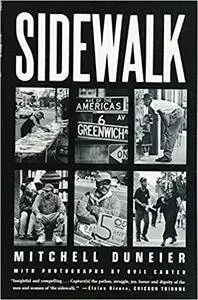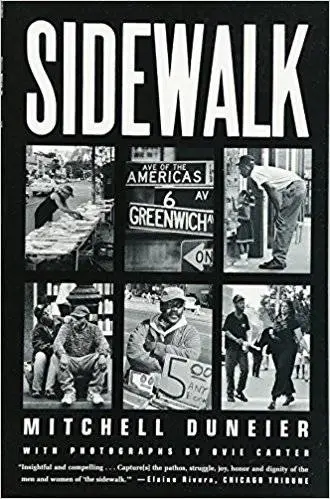Mitchell Duneier, Ovie Carter, "Sidewalk"
English | 1999 | ISBN: 0374263558 | PDF | pages: 386 | 92.3 mb
English | 1999 | ISBN: 0374263558 | PDF | pages: 386 | 92.3 mb
In 1961, Jane Jacobs changed the literature of urban life forever with The Death and Life of Great American Cities, a now-classic study grounded in her observation of her own neighborhood, Greenwich Village.
In Sidewalk, Mitchell Duneier (author of the acclaimed Slim's Table) takes us back to the streets of the Village, but finds a scene very different from the one Jacobs described. Much of the architecture remains, and many people live the way Jacobs suggested, but there is another population in the Village today–-poor black men who make their lives on the sidewalks by selling secondhand goods, panhandling, and scavenging books and magazines left out for recycling, and whose appearance and behavior are affronts to the sensibilities of many passersby. By now the men are known to many Village residents: Hakim Hasan, who sells "black books" and acts as an informal mentor to young men; Ishmael, Grady, Ron and Marvin, who sell magazines and other merchandise, only to have their wares thrown out by police when they leave their block to relieve themselves; Mudrick and "Joe Garbage," who sell items retrieved from the trash; Keith, who panhandles outside the ATM vestibule; and other men! (and one woman) who come and go on what they call "the blocks."
In recent years, these men and others like them have become the targets of "quality of life" campaigns in cities nationwide. Mayors scold them. Police keep after them. Businesses want them off the streets. Even liberal whites feel uneasy in their presence. These men are seen as proof of the influential "broken windows" theory, which holds that the mere appearance of social disorder leads to crime.
But Duneier contends that, far from being incitements to crime, the men on the street are necessary and beneficial to city life today, and that their behavior, which often appears disorderly, actually contributes to the order and well-being of the neighborhood. For five years, he spent time on the blocks with them - working with them at their vending tables, hearing their stories, and observing the roles they play in the ongoing life of the city. Often he was accompanied by Ovie Carter, whose photographs depict Village life with rare breadth and insight.
Sidewalk brings us into the hearts and minds of the men on the street, showing us not only their common human values but also the many practical and moral choices they must make every day. Duneier explains how cultural and political factors can spur people to self-destructive behavior, and illustrates how the same people can weave together complementary elements of a city - laws, friendships, popular culture, and the spirit of a neighborhood - in their struggle to survive.
No other recent book has managed to convey the character of contemporary urban life in all its complexity - its vitality, its class and race conflicts, and the surprising opportunities it offers for empathy among strangers. Sidewalk gives us a clear, sharp picture of city life today - as it is, and as it might be.



